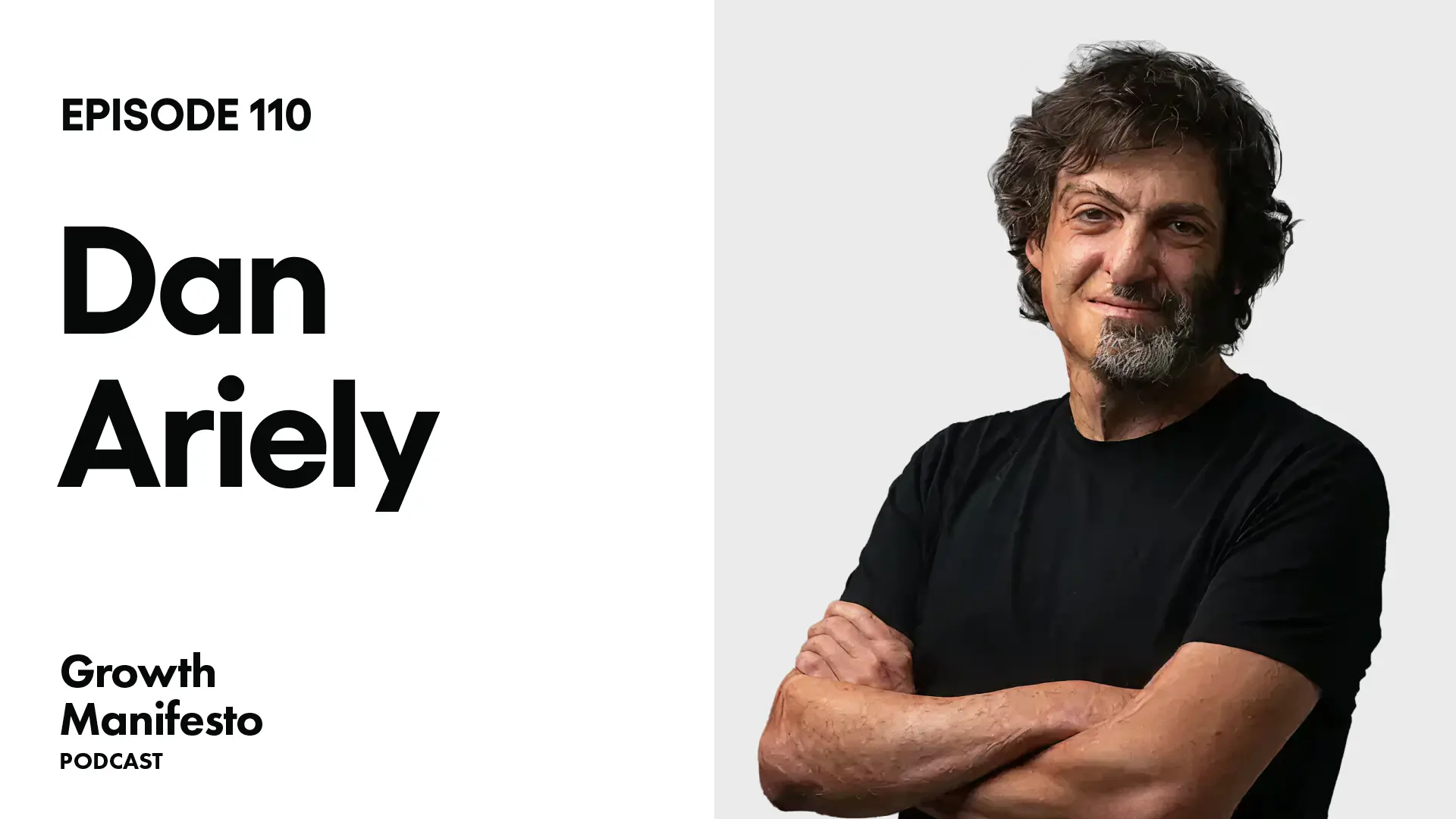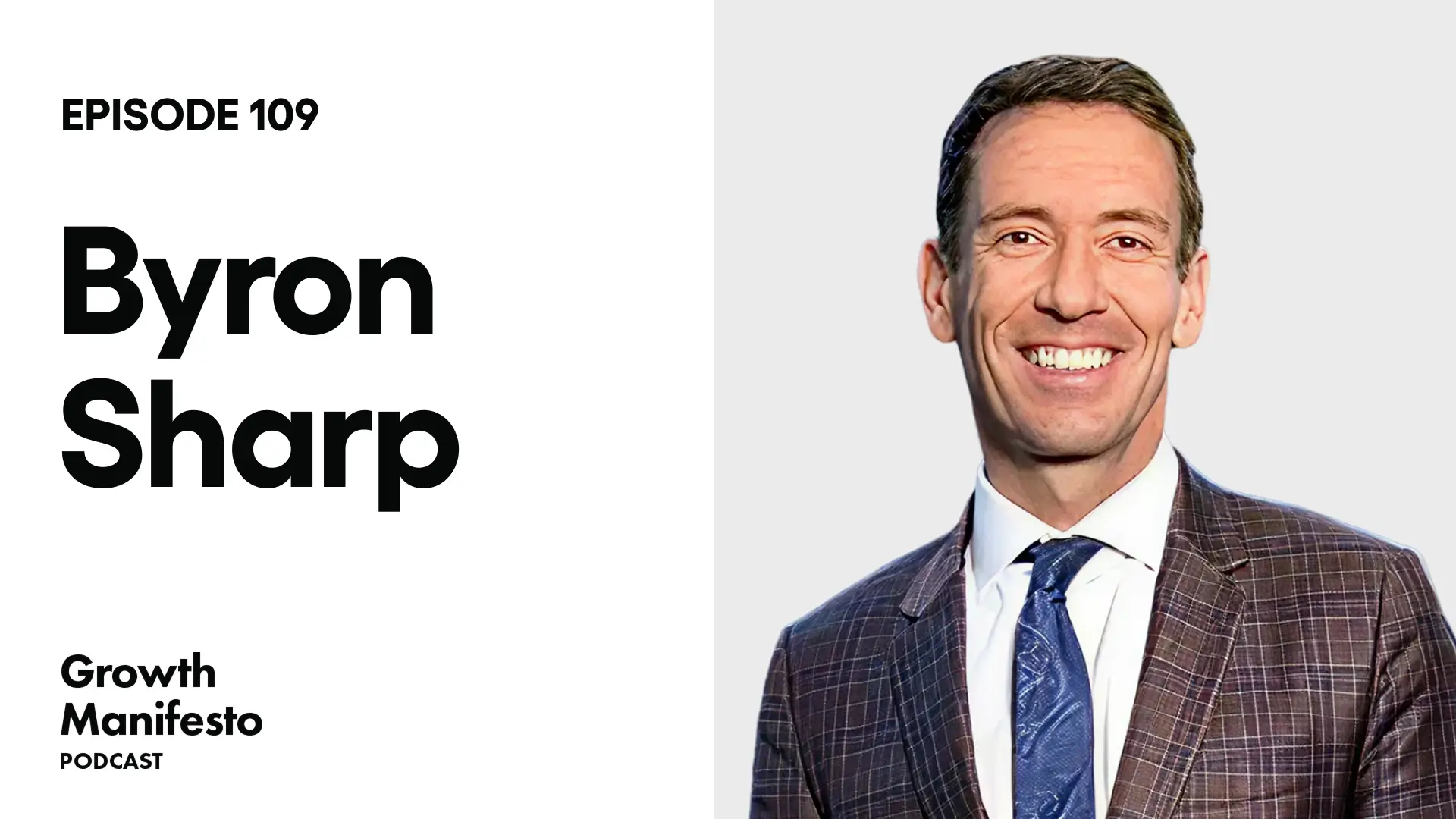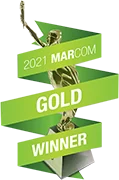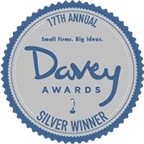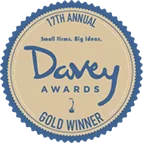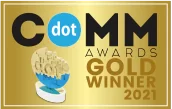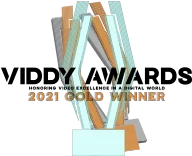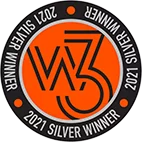How to out-pitch your competition
This episode is with Bob Wiesner – Managing Partner at The Artemis Partnership, author of ‘Winning is Better’ and who is known as the ‘pitch doctor’ because of his approach to winning pitches. He’s advised on over 400 transactions in the last 25 years and his clients include companies like KPMG, Deloitte and JP Morgan Chase, and top firms in advertising, accounting, architecture, engineering, consulting, law and investment banking. In this episode we talk about his approach to pitching less and winning more deals, and how to out-pitch your competition.
—
You’re listening to The Growth Manifesto Podcast, a Zoom video series brought to you by Webprofits – a digital growth consultancy that helps global and national businesses attract, acquire, and retain customers through digital marketing.
Hosted by Alex Cleanthous.
-
-
- YouTube: https://www.youtube.com/c/GrowthManifestoPodcast
- Instagram: https://www.instagram.com/webprofits/
- LinkedIn: https://www.linkedin.com/company/web-profits/
- Facebook: https://www.facebook.com/Webprofits/
- Twitter: https://twitter.com/webprofits
- Agency: https://www.webprofits.io
-
SHOW NOTES
-
- 00:00:21 Bob Wiesner’s introduction to the Growth Manifesto Podcast
- 00:01:18 Bob Wiesner’s approach to winning pitches
- 00:03:19 Bob Wiesner’s strategic approach to pitching
- 00:07:00 The importance of seeking out your clients
- 00:11:55 The intensity of high-level pitch
- 00:14:28The difference between sales and business development
- 00:17:42 The mindset you should have in business development
- 00:21:52 How to pitch less and win more
- 00:26:01 Close rates from from qualification stage to a deal
- 00:27:59 Bob Wiesner explains the Pursuit Process and The Pursuit Team
- 00:31:59 The four considerations to win a pitch
- 00:39:23 How to build courage
- 00:42:58 What kind of companies are best suited to working with Artemis partnership?
- 00:47:00 The best way to contact Bob Wiesner
TRANSCRIPT
Bob Wiesner:
I’m telling you Alex, and I’m sure you know this, even from your own business, it’s just so hard to say no, when that RFP or RFQ comes floating into email and from the highest level that’s where you got to start.
Alex Clenthous:
This is Alex Cleanthous and today we’re talking with Bob Wiesner, who’s the managing partner at the Artemis Partnership. He is the author of the book Winning is Better and he is also known as the pitch doctor because of his approach to winning pitches. He’s advised over 400 transactions in last 25 years. And his clients include companies like KPMG, JP Morgan Chase, last Deloitte and top firms in advertising, accounting, architecture, engineering, consulting, law, and investment banking. Today, we’ll be talking about his approach to pitching less and winning more deals and how to out-pitch your competition. Just quickly before we get started, make sure to go ahead and hit that subscribe button so you get the latest episodes soon as they’re released. Now let’s get into it. Welcome, Bob.
Bob Wiesner:
Thank you, Alex. I’m delighted to be here.
Alex Clenthous:
Yeah. And I am very interested in this conversation because a lot of the information which I have read in your book and the strategies and so on is something that I can use every day. So, on one side of it, this is with listeners on the other side, I’m trying to understand how you pitch less and win more. So with that being said, let’s get straight into it. And at a high level, what’s your approach to pitching lesson winning more?
Bob Wiesner:
Well, first of all, it is a great and a very important question. Believe it or not, what it takes more than anything else is courage. We and who specialize in growth in business development, who have firms that want to get bigger, we tend to want to chase everything. Now, there could be a lot of different reasons for that, some of which are very practical. But at the end of the day, a lot of what you’re pursuing is not going to have a high probability of turning into a win, no matter what you do. And as we would view it, you didn’t belong in that pursuit. So you need to just have the intestinal fortitude to say, we’re going to be much, much more selective about what we pursue. We’re going to take on opportunities that we think we both deserve to be in. We’re going to pursue them with great intensity.
We’re going to show the prospect that we really, really are the right firm for them, because we truly understand their business and thus convert a higher percentage of them. But I’m telling you, Alex, and I’m sure you know this, even from your own business, it’s just so hard to say no, when that RFP or RFQ comes floating into email. And from the highest level, that’s where you got to start.
Alex Clenthous:
So you talk about having courage and I think that’s a really great place to start. In your book, you talk about strategic growth. And I think this aligns a little bit with what you’re saying. It’s that you don’t want to take every opportunity that comes your way, but there’s a tension between selecting which pitches, which opportunities you put your time into, and sales and revenue targets, because there’s always this thing. And then there’s pandemics in between, wars, there’s all this uncertainty across the marketplace. And so then how do you think about strategic opportunities? Let’s start there because I think this helps the listeners to understand how to have more courage in the areas that matter.
Bob Wiesner:
Yeah. We think that a strategic opportunity meets three criteria. First of all, it allows you to do the work that you want to do. All of us are capable of doing a lot of different things. Some of that is work that’s right in our wheelhouse. We really love doing it. It enhances a reputation. It makes us more attractive to employees. It makes us more attractive to new business. It earns more money. We’re also capable of doing work that doesn’t meet those criteria, but we can do it. It’s nothing that is terribly exciting, but it certainly could perhaps keep the lights on. A strategic opportunity, first of all, focuses on work that we really, really want to do. Second criteria is it comes from a client that we really want to work with.
There may be clients that have money to spend that’s attractive, but their reputation may be less than stellar. They might burn churn their vendors. They might not have any more work to offer after the initial project, is that somebody really worth taking the time and energy to pursue? The third, which may be the more surprising than the other two, is it work that will be profitable for you? Now you talk about the pandemic and you talk about revenue shortfalls, that many, many businesses are experiencing. We’re all in favor of being opportunistic, especially if it’ll keep the lights on, if it’ll keep people employed. That said, a good part of your business development effort still has to be targeting work that is profitable for you, not just revenue generating, but profit. Revenue can easily be eaten up into very, very slim profit margins, which mean you don’t have much money to reinvest in your business.
When you’re chasing after profit, now you have money to reinvest in the business, to reinvest in people, to reinvest in resources, in marketing, in compensation and benefits. Things that propel your business, energize your people and allow your business to now grow year on year, because you’ve enhanced your resources, not just won a project, but actually set yourself up for future success. So strategic growth meets those three criteria. It’s work you want to do from clients you want to work with and profit that you really want to make.
Alex Clenthous:
So you really need to know those three areas. And I think step one is to know what clients to work with and what is the best work that’s going to help your team succeed, help the company succeed and make everybody happy with the work that they’re doing. And every company will know those types of clients. They know the ones that are the best, that pay, and that are profitable. And so the goal is to create some personas around those specific types of opportunities and to go out for them, is that the lens which you’re saying? Is like, we need to understand now this is the type of client that we want to get that fits into those three criteria. So all the leads that come in and all the outbound activities that go out, they have to fit within that persona profile. Is that-
Bob Wiesner (06:48):
Yes.
Alex Clenthous:
… the way About it. I’m trying to summarise it for me, for the listeners, just to understand that I’ve got it, if that makes sense.
Bob Wiesner:
Yep, you’ve got it. And think of it this way, Alex, if you have a strategy, but you don’t execute it, then what good was having a strategy. So you build a strategy that includes in it, as you describe, the kinds of clients and the kinds of projects you want to have in your organization. Now, you have to go out and you have to pursue them. You can’t just wait for them to send you an RFQ or an RFP, which is unfortunately the way too many firms that we come across operate. If there’s a company you want to be working with and a project you want to handle, you need to formulate a mechanism by which you reach into that company, you identify yourself as a potentially valuable resource and you engage in conversations with them, even if they have no interest in putting a project up bid.
By getting into that position with them, you could perhaps encourage them to give you some work that they weren’t otherwise thinking they were going to give out. Or by the time they do have an RFQ or RFP to issue, you are the top dog. You’re the favorite in that company. So it definitely requires a discipline to execute against that strategy in order for this to prove itself out.
Alex Clenthous:
You talk about the ROI of pitching, which I thought was really interesting. I’d like to ask you about it, but it’s a formula. Is it something which we can talk about or is it something for the book? Because I’m just really interested in just the concept behind the ROI of pitching, because I think there’s a lot of organizations who just include pitching as part of their process, but they don’t actually calculate the cost of it. And just from your book I saw, well, it could actually be unprofitable. So what’s at least the thinking behind the ROI of pitching?
Bob Wiesner:
I can certainly talk about it conceptually, without giving away too much, because we love to sell a book or two as a result of conversation. Here’s what it comes down to, in many organizations, business development is an expense. It’s an expense line. So you have the amount of money you’ve spent on your business development teams. You may have money you’ve spent on meetings, money on travel, out of pocket expenses for materials and proposals and so on. What very, very few companies actually do is look at the investment that they made on any one specific pitch, and see if that investment turned into enough revenue, or actually in our case enough profit to justify that investment. So you may be pursuing 30 different opportunities over the course of a measured time period. Your investment in those 30, which would include man hours as well as out of pocket costs, could be such that if you had reallocated that investment to 20 and not 30, and instead of winning, let’s say 5 out of 30, you won 8 out of 20, you would actually realize a higher ROI on that business development effort.
Your expense line in your PNL might not have changed. It might even have gone up a little bit because we do believe in the concept of intensity and effort, but it wouldn’t have gone up by magnums. It would’ve just gone up by a few percentage points. Nevertheless, your amount of wins went up and the profit that you generate for your company went up. So that’s what I mean by ROI. Is are you able to measure the profit that comes in for your new business and compare it to the real cost, including manpower of pursuing those specific opportunities?
Alex Clenthous:
And then calculating the profit on those to the cost. And so what I just heard you say, and I’m just going to clarify just for myself and for listeners is that you might not spend less on pitching, but you’re increasing the intensity of the pitch, which should then… And because assuming that, so now there’s a strategic selection of the opportunities which you go for, they’re worth more profit to the company, so the ROI is higher. And so is that correct first of all, that summary which I said?
Bob Wiesner:
Yeah. That is accurate.
Alex Clenthous:
I’m going to keep doing this through the whole episode just to make sure that I get it. Because I think if I have a question, potentially the listeners will have the same question. And so then you talk about then the intensity of the pitch, which is really interesting. And the book has frameworks and pitch squads and pitch team leaders and all this type of stuff. So get the book to be clear. But just in terms of the intensity of the pitch, can you talk about high level, the thinking behind it? Because I thought it was taken to another level in terms of, I understand how this approach can win more pitches.
Bob Wiesner:
Yes. It comes not from anything that we necessarily identify, but it comes from what the buyers perceive. A decision maker on a corporate side, let’s talk B2B pitching. And the initial round, they might be reviewing 25 or 30 submissions of RFQs or RFPs. And they may come down to five finalists who go through a big pitch process, or they call it an interview, or they call it a meeting. The buyer can tell who applied effort, and care, and passion, and energy, and intensity to that pursuit. They could certainly tell in comparison to the other guys who didn’t, who went through an automated process, who churned out generic materials, who gave them proforma approaches.
They can tell the difference between people who just answered the questions in the RFP and didn’t go any further from those who took a deeper dive into the real issues and challenges facing that prospect and chose to address them in addition to the core requirements of the RFP. So the buyers can tell who had intensity and who didn’t, and as your listeners have to agree, that’s got to make a big difference in who they’re going to select. So we think that, there’s just such a lack of understanding around how buyers make decisions and the role of these factors that ladder up to intensity that the firm that chooses to acknowledge it and adjust their business development practices in order to express it is going to have a huge advantage in competitive pitches.
Alex Clenthous:
I’m excited to get excited, because I’ve got a few different questions all coming to me at the same time. So I’m going to try and structure them in a good order for the listeners. You talk about the difference between a sales and business development. This is something in the book, right. And I’ll really like your definition of it, or I guess how you explained it. So are you able to just quickly just explain how you see the difference between sales and business dev?
Bob Wiesner:
Sure. We’d actually think that’s maybe one of the simplest concepts in the book. Sales is a transaction. When you’re practicing sales, what you’re doing is you’re following a very well defined process, usually a shorter one designed to get to a close. The seller and the buyer know their roles. They know why they’re there and the seller is trying to close a deal. The buyer is trying to acquire a benefit as a result of the deal. And you’re in this dance and everybody knows what the steps and what the moves are. But there’s no question that the end result is the handing over of money in some form from the buyer to the seller. Business development is not a transaction. It’s not driving to a transaction. Yes, it’s driving to revenue for the developer, but the relationship is different.
The relationship between the business developer and the buyer now is one that comes through a client-centric series of events in which the business development team is continually bringing value to the conversation, is continually making the buying organization or the buyers themselves smarter, wiser, maybe more excited, maybe more aware. And there are necessarily specific steps, although we think there are specific activities associated with business development. But we’re not driving to a close, we’re driving to an inevitable agreement that I, the buyer really do have this problem. And you, the business developer really offer me something that I didn’t think I could get, which is a solution to it. So that result in both cases is revenue, as I said, but the roles that buyers and sellers play in these two different scenarios are entirely different and they’re likely to lead to very different kinds of outcomes.
Alex Clenthous:
Thank you for that. You talk about business development positioning. Now, this is taking this concept, which you just explained, and then adding a positioning level on top of it. And you talk about the integration between sales and marketing and how all this should progress the relationship. And so I thought that was a really good topic because a lot of sales or business development people will try to do the nurturing, but they’re coming at it from a sales perspective. And so it’s like they’re saying, “Oh, well, he just said, I should do that. So I’ll just half do it and then the buyers can tell.” So what’s the mindset around the value adding and the business development positioning that you talk about in your book.
Bob Wiesner:
Yeah, ultimately, and let’s go back to one of your first questions, let’s look at it from a high level. We’re trying to reframe the business development organization’s approach to business development, to get it away from being self-centric, firm centric, to being prospect centric. Positioning is just one reflection or pre-positioning, which is positioning before the RFP is a reflection of making that pivot. Too much marketing information that goes out right now, both because marketing departments are thinking this way. And because business developers are thinking this way is about how wonderful we, the firm, are.
Look at our products, look at our process, look at our people, look at our case studies. It’s all about us, us, us, us, us, us. Buyers don’t care about that. And even if they did, even if they did, even if they did, they cannot differentiate among competing firms on that criteria alone, as easily as the competing firms think they can. So I’m a consulting firm and I put out the biographies of my people and my client list and all those great things about myself. And I think that, that makes me stand out from the crowd. The buyer gets that and it looks exactly like 17 other submissions that they’ve gotten.
So this idea of bringing value, it comes from the premise that we want all communication from the business development side to be directed at what’s matters to the client, not what that particular firm is proud of or thinks is important. So you got to have insights on the business. You got to have a point of view and a perspective, You have to challenge the buyer to think differently about what’s possible or what’s wrong, what’s broken. All of those things are elements of a positioning that become buyer-centric and not seller centric.
Alex Clenthous:
Great answers. I’m loving this. It seems like it’s a whole strategic approach. Obviously, it starts with the selection by selecting the kinds of companies which give you the most amount of profit and happiness in the company. It’s a type of client who you want to work with, part one. Well, the companies which you need to select have to have the potential to spend enough with you to be able to support this investment. Because this is an investment of understanding the client, the person within the company, their needs, the decision making unit and so on. Because then you’re spending a lot of time actually, I guess, what’s the word, engaging with them.
And so you talk about pitching less and winning more, but it sounds like at the beginning of, not the funnel, because I hate that word, but at the start, there’s a lot more, I guess, organ or potential clients that it’s starting with. Is that correct? Yeah, please. I’m trying to put it into a question right now where it’s like, I’m trying to figure out how much of that I guess, is basically required in the beginning to close these deals? Because it’s obviously pitching less to win more, but there’s a starting point.
Bob Wiesner:
Well, pitching less to win more, maybe it’s more of an ending point. Because as you’re referring to Alex, it starts with a more holistic consideration of just where is our value? What do we actually do that the world would want more of, or the world would embrace? Let’s identify our strengths first. Let’s look at our successes. Let’s break them down. Not just that will we help sell a beer, but what’s the problem that, that beer company had. Is it possible that other companies have similar problems that have nothing to do with beer, but could really relate to having that challenge, that difficulty? We may find at the beginning, and this is very frequently the case when we do this strategic work with our clients, that there’s more companies that you could be targeting than you thought they were.
Because you don’t have to limit yourself only if you have beer experience only to other beverages or other spirits, you can go in dozens of different directions if you’re smart about identifying what the problem is that you solve. So we would actually start broader by recognizing the fact that the strengths that we have and the issues that we address so effectively might be experienced by a multitude of prospects. Now though, we have to factor in the other things. We can’t pitch everybody. We couldn’t do that before. We’re certainly not going to do it now. So what are the criteria that we’re now going to apply that will help us select from this now longer list?
Now, here’s where your small number comes in, only those fewer companies that we actually want to put energy into. Now for that, we have models around how do you qualify? How do you identify from a marketing standpoint? The easier targets to be not necessarily easy to get to, but easier to be convinced, easier to be persuaded? Where is your network? Where can you get referrals? Who can you meet easily? So there’s a bunch of criteria that we could help. And then any company has to go through to now go from a longer list now down to a shorter list, so that you now can be in a position to pitch less and win more.
Alex Clenthous:
And are these qualification ideas inside the book or are they part of the engagement that you provide at the Artemis Partnership?
Bob Wiesner:
We give sample criteria in the book, a thought starter for any company, but every company is going to have to build criteria that they are most comfortable with because that criteria is designed not to let more opportunities in, but to keep more opportunities out. So we would highly recommend that you work with a consultant who has an objective point of view about what you’re really capable of pursuing, what you really should be pursuing so that you, the company, can be more comfortable that you’ve got the right criteria. And then when opportunities do not make it through your filter, you can actually applaud that because you know it was a good decision as opposed to being uncomfortable because you had to say no.
Alex Clenthous:
And I’m seeing how it all starts to fit together from the short list that got through the criteria. And now you know, okay, so these are the organizations, or the opportunities, or the prospects, which I am now going to start to invest my time into, to create the business development positioning. What’s your expectation of the close rate let’s call it, from the number of opportunities which have gotten through the qualification stage to actually to win the deal to start the relationship in some way, if that makes sense.
Bob Wiesner:
Yeah, really interesting question. I would say that my expectation is that you will have industry best close rates, if you do that. Now, depends on the industry. If your industry best is 25%, 35 or 40% would be phenomenal. That being said, it’s been our experience with our own clients that the close rates get up into the 60 and 70% range. They’re not unusual. If I were a financial advisor, I would say, “Your results may vary. Past performance is no guarantee of future returns.” But that would be where we would hope to see our clients get to. Now, in order to do that, it isn’t just the pitch less win more. Let’s be really clear about that. Strategically, that’s what you want to do. But now you have to look at how are you executing that pitch? How are you representing intensity in your pursuit? Now, your activities, your messaging, your behaviors become so important. It’s a great start to have a strategic growth plan. It will go for not if you cannot execute it well. And perhaps, for that, you might also need somebody to guide you through that execution of it.
Alex Clenthous:
Yeah. This is very high value information right now. So thank you for sharing all this so far. Could we jump to a couple more points out of the book because I think there’s a really interesting concept. I think, number one, you’ve talked about the pursuit process and the pursuit team. So when there’s an actual opportunity, now you increase the intensity of everything which you’re doing. So are you able to just quickly explain what you talk about in terms of the pursuit process?
Bob Wiesner:
The pursuit process has at its foundation, the goal of learning more about the decision makers and influencers on the prospect side than any of your competitors can possibly learn. So your pursuit team has to be activated to do just that. Not just go through LinkedIn or go through Google to see what’s in the news. If they’re a publicly traded company, of course, there’d be a lot of information available on them, but really do your networking and your homework and try to understand what the individuals, where they came from and what they care about. So on the one hand, your team has to be dedicated to really getting a much deeper understanding of who they’re pursuing as people. Secondly, you have to work really hard to get facetime with them. And as you mentioned earlier, Alex, that’s where your alignment between marketing and business development is so important.
Your marketing content, it creates the desire on the part of the decision makers to want to meet with you if the marketing content is well written and well designed. So get that marketing content out in front. Now, this major business development team has to take charge of that. It can’t just be a newsletter or a blog post that only 30% of your readers will open. You have to send it directly to people and follow it up 2, 3, 4 times to make sure they see it and get their reaction to it. If you’re doing this well, you can turn a high percentage of those into meetings. Now, when you get a meeting with somebody, first of all, it has to be a priority. You can’t just not do the meeting because I have to do my other work and you have to plan it. You have to be smart about it.
So that, that meeting is more than just, let’s show you our credentials deck and ask you a few, how much money do you have to spend questions, but actually get to know you, understand your business issues, your business challenges and opportunities, and share with you our insights, share with you some perspectives so that we make you smarter as a result. This again is your business development team has to put the time in to do that. So the process, and this by the way, is another reason why it’s pitch less, you can’t do this too often and have the bandwidth for it.
So with fewer opportunities, you can take the same 100 hours a year that a professional devotes to business development. And instead of devoting it to 25 pursuits of four hours each, devote it to 10 pursuits of 10 hours each and now you’re starting to really get deep into getting to know the decision makers, presenting your value, advancing your case with them, moving yourself up to the top of the heap of potential options. And that’s where you get the win rates that are as high as we think they ought to be.
Alex Clenthous:
Thank you again, as part of that then, so you have these meetings and now they invite you to pitch. And so part of what you talk about in the book is that there are four considerations or four areas of consideration that will help you to win the pitch, the solution, the fact that you understand them, the chemistry and politics. And it seems like most pitchers focus on the solution, but there’s three other areas which most people don’t even consider. So it does seem like this pre positioning, I guess, or this preparation before the pitch will handle the other three that’s outside of the solution. So are you able to just quickly speak about the parts of a pitch that the majority of companies that don’t even think about, and then they don’t actually win the deals?
Bob Wiesner:
Yeah. Well, first of all, you’re absolutely right about those four elements and they have to be identified and leveraged well before the actual pitch if by pitch you mean a presentation-
Alex Clenthous:
A presentation, sorry.
Bob Wiesner:
… at the end of the process. Yeah, of course. No, no. I just want to make sure that we’re in the same place and the timeline. If you don’t have it totally identified and initially leveraged by the time you get to the pitch, you’ve got no chance of winning anyway. So it doesn’t matter what you do in the pitch. You might as well just show up in clown costumes and do a song and dance. Don’t tell anybody that Artemis recommended that by the way, that is a pitch strategy. So all of your intensity up front before the actual pitch is dedicated to, first of all, identifying the factors that qualify as understanding chemistry and politics, knowing what messaging you need to deliver so that you get let’s call it the best score that’s possible in those areas. Then when you construct your final pitch, you’re able to place all of those elements into the actual presentation, in the right order.
One of the most serious mistakes that pitch teams make in competitive bids is they wait too long to deliver something of interest. They go through an opening, 10, 15 minutes, 20 minutes of proforma stuff. Let’s introduce the team. Let’s show you a bit about our company. Here’s our credentials and our processes and our cases. Here’s what you told us you’re looking for, this was in the RFP. And decision makers, they’re going to hear this five times, the exact same thing, five times. You want to win a pitch and really show that you’ve captured all these elements from those four components that you mentioned, Alex, then that’s what you start. You start with those four components. You start out in the first 10 minutes with here’s what we understand about what really, really matters to you. Here’s our take on your issue, your problem, your opportunity. Here’s a sampling of what the solution might look like.
When you understand what this is, what these elements are, you can actually graft the final presentation so that it reflects those, and it gets there quickly. And then you get decision makers sitting in the boardroom, real or virtual, I guess in Australia, you have bobblehead dolls for sports celebrities, and that’s what they’ll look like. Because in the first 7, 8, 9, 10 minutes, their heads will be bobbing up and down like bobblehead dolls and you’ve got them won at that point.
Alex Clenthous:
And it all comes down to understanding their challenges, their business and the individuals within the team and the politics between the individuals. And then obviously having a chemistry that they like you and your team, which will come from them thinking that you understand them, and that you’ve done the research and that basically, it’s almost like they need to think that you understand them a lot better than everyone else. Plus they like you more because of it and they can see how far that you’ve gone and I’m sure everyone is going to love that. Is that the mindset around it or the things-
Bob Wiesner:
That’s exactly the mindset around it. An interesting thought exercise for your listeners is to do this. Think of the feedback that you’ve gotten after successful pitches and unsuccessful pitches. If you’ve lost a pitch, I’ll wager that the feedback you got were things like it was very close. It came down to price. Your solution didn’t quite fit our criteria of what we were looking for. Please try again next time. So it’s very rational. It’s not meant to hurt your feelings. It’s frankly not very useful. Now, think of the feedback that you get when you win, what are they telling you? We loved your passion. We loved your dedication. You really got us. You really understood us. We felt a good connection with you. We were energized by the interactions we had with you. These are different for a reason.
You didn’t get feedback initially when you lost that, we didn’t feel any passion, we didn’t feel any devotion, we didn’t like you very much. Maybe if they did tell you that, by the way, that would be awesome because you could do something with it. But there’s a reason why passion and chemistry and so on comes up as feedback and that’s because it really mattered. They didn’t tell you that, well, you had the better solution. They believed you had the better solution, but the reason they thought you had the better solution is because they liked you, because you understood them, because you showed passion and intensity. So, all these things come together. Everything we talk about in the book, yes, an organization can use a specific chapter alone to probably improve some of their results. But the best outcomes you get is when you fit all these pieces together, as you’ve been alluding to and that turns into a thing of beauty.
Alex Clenthous:
And that’s where it requires courage, because the courage is not let’s look at a chapter and let’s just pass the sales team or the business dev team. Hey, just do this now on top of everything else, but don’t change anything. And now let’s just do more. Now, it’s actually about thinking more, planning more and making choices of what not to do. Because it’s easy to think of all the things to do, but I think it’s choices of what not to do, which is your qualification criteria. So yeah, I can see how it does take courage because even just thinking about all the changes that a company would need to make from the marketing to the first engagement, to the business dev team, to the production team, to the research processes, it’s an investment, not of a different, it’s not a lot more money, but it’s a lot more focus, which means you are excluding a lot.
And that exclusion, I think is the biggest challenge, I think for lots of business leaders. And so what would you say to that, how do you get more courage? If I’m listening now, I’m thinking, man, everything he’s saying is great. I really want to do it, but oh, my gut doesn’t feel right. I’ve got all these pressures going on. So what do you say to people like that? Which is probably the majority of people, by the way.
Bob Wiesner:
Yeah. Have a drink, chill out and let’s talk about this with or without the adult beverage, but let’s talk about your goals. What do you really want to accomplish? How important is it for you to grow your revenue? Very important, of course. Well, how important is it for you to grow your profit? Have you thought about that? How important is it for you to have an energized workforce, to have clients who are culturally aligned with you, who your people enjoy working for and don’t consider it to be drudgery. How difficult is it for you to pull together a business development team when an opportunity comes up. Wouldn’t it be better if people were falling over each other and elbowing each other out of the way to be part of business development? Let’s talk about what’s really important to you besides just the results of pitching.
And let’s see how we can make that happen with a smarter pitch strategy. Because that’s what it’s designed to do, it’s not designed to make things less effective for you. It’s designed to make things more effective for you. Now, we’re also at Artemis, we live in the real world, Alex. And there’s a reason why you have to be opportunistic and there’s a reason why you have to chase low hanging fruit. What we want you to do ultimately, and this will fit majority of companies, is we want you to have a balance. Don’t be 100% op opportunistic or 100% about chasing. I had an ad agency that came to me a couple weeks ago. I asked the owner of the agency, what his objectives were for wanting to work with us. And he said, “I want to get more RFPs.” And I said, “Well, you came to the wrong place.”
Alex Clenthous:
This is about less RFP that are worth more.
Bob Wiesner:
Yeah, because that’s not what we believe in. But I understand why you might need to have some activity going maybe all the time because it does keep the lights on. I just want you to have a balance, minimally have a balance. I want there to be some effort against strategic accounts that do not take away, let me rephrase that. Some effort against strategic accounts that are a priority so that you don’t put too much emphasis on opportunistic, or reactive, or tactical accounts. I hope I said that right. Because they actually both can coexist at least in the near term, longer term though, the most successful organizations devote 80 to 100% of their energy to being strategic about their pursuits. And ultimately, they have the best results.
Alex Clenthous:
I’m sure that all the listeners of this podcast understand the value of strategy versus tactical. And so I think this fits that mindset. So for the Artemis Partnership, sounds like this can be a daunting process. So having a consultant like yourself can actually help. So what companies are most suited to working with the Artemis Partnership?
Bob Wiesner:
We seem to have a really good fit with professional services. So these could be architecture, public accounting, law, advertising, engineering, construction, of course, management consulting, all different forms of consulting, executive recruiters. These are organisations where, I’ll call them and I don’t mean any offence by this, the tradesmen, the craftsmen, like the lawyers and the architects, are also charged with responsibility of the developing new business, whether it’s going out and finding opportunities, whether it’s growing their current client relationships or whether they’re just invited in to be part of a team, because there might be a business development role that’s fulfilled by someone who’s full time.
Those kinds of people love working with us because we understand them, nearly all Artemis people came from that environment. We know the challenges of trying to add what they call selling on top of the performing of their expertise. And we’re able to break it down. That’s the reason by the way that we differentiate between sales and business development. We’re able to turn them away from being salesman, turn them into business developers, allow them to use the expertise that got them to be successful at their craft and engage it in a business development way. So those are a really well matched client set for us.
Alex Clenthous:
And is there a certain size organization in terms of as either staff count, or the revenue, or the value of a deal? Is there any qualification which people should be hearing about now before they contact you to make sure that you follow the same process, I’m assuming? So, yeah.
Bob Wiesner:
Again, a very good question. We tend to look at the value of the deals, the value of the important deals as a qualifier for somebody who would want to work with us.
Alex Clenthous:
How much is that?
Bob Wiesner:
Because they’d recognise the upside.
Alex Clenthous:
Okay. But how much the starting point just for you to be like, “Yeah. Okay. I can work with you.”
Bob Wiesner:
Well, because there are different ways of working with us. There are different kinds of starting points, but minimally we’re looking at low six figures that would represent a good deal for somebody to win. Now, we’ve worked on bids that are upwards of $35 billion with a b, the higher the value of the bid, the easier it is for the company to rationalise the cost of using us. That being said, the $35 billion bids come around once every five years. The $300,000 bids, come around 15 times a year. So a company that pursues smaller projects should want to work with us as much as the one that pursues larger ones. If you’re pursuing opportunities under $100,000 then you’re almost certainly in a highly transactional environment, high churn environment that’s driven largely by price. And our principles will be more difficult for you to align with. They’ll still work, but it just might be a greater mental block against wanting to make those kinds of changes.
Alex Clenthous:
Fantastic. And for the people that are interested, what’s the best way to contact you?
Bob Wiesner:
They can contact me through LinkedIn, that’s probably the easiest way you can. We can also speak through my email, which is bob.wiesner spelled with W-I-E-S-N-E-R @artemispartnership.us. And we are by the way, a global organization. So I have partners for EMEA and for Asia Pacific. And if an organization is located in AsiaPac would like to work with Artemis, let me know and I’ll put them in touch with our managing partner for Asia Pacific and get the relationship going that way.
Alex Clenthous:
Fantastic. And just to wrap it up, the book, Winning is Better. And we just touched on a few things today, but there’s stuff in the book around proposals, and how to structure proposal, and how to structure a presentation, and how to actually conduct the research and some frameworks that are involved in the whole process, and stories to help you actually contextualize it a lot better. So I highly recommend that you purchase the book. If you’re interested in closing these larger B2B deals, this is an ideal book for that. And it’s available on amazon.com, or .com.au, or whatever country that you are in. Bob, thank you so much for coming on the podcast and sharing this information. I’m sure this is extremely valuable in today’s challenging economic environment, where there’s so many people all competing for, feels like fewer dollars, but maybe there’s just more competitors now. So this-
Bob Wiesner:
There’s definitely more competitors now, yes.
Alex Clenthous:
Yeah. And so these kinds of thinking are super important, because you can’t just keep doing these transactional approaches anymore.
Bob Wiesner:
You got to build relationships and they’re harder now when you’re doing it through Zoom than when you could go in person have a cup of coffee, but that doesn’t mean the relationship doesn’t count. It just means that it’s harder to establish it. And the ones that make the effort to are going to come out ahead. So Alex, thank you very much. This was really fun. Delighted to have the opportunity to do this.
Alex Clenthous:
Thanks so much, Bob. And we’ll talk soon. Thanks for listening to the Growth Manifesto Podcast. If you enjoyed the episode, please give us a five star rating on iTunes. For more episodes, please visit growthmanifesto.com/podcast. And if you need help driving growth for your company, please get in touch with us @Webrofits.io.
Now that you’re here…
Why not take a few minutes to see how Webprofits can help you achieve your growth aspirations?
We helped one company grow from $25M to $190M revenue in 4 years, and we work with challenger brands that want to make a serious impact in their industry and have the resources (and the will) to make it happen.
If you want a growth strategy that leads the way in your industry, find out how Webprofits can help you transform your digital marketing.
See what we can do


